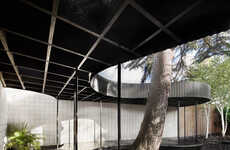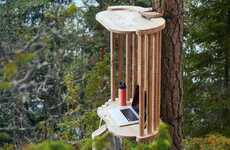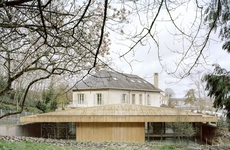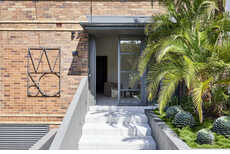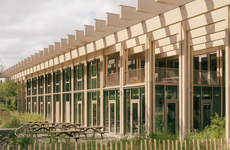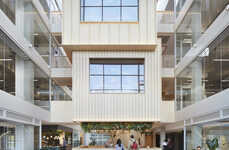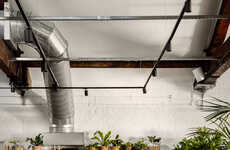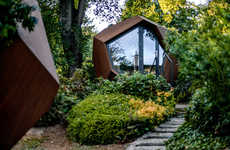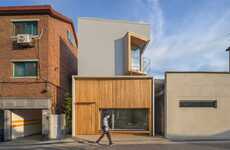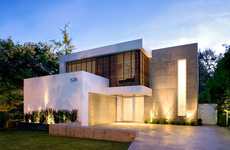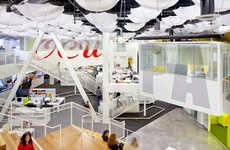
Invisible Studio Creates a Haven Workspace in the Trees
Jamie Danielle Munro — July 10, 2014 — Art & Design
References: invisiblestudio.org & designboom
To find a space for getting down to work, Invisible Studio decided to take matters into their own hands and build an office near Bath in the UK. The surrounding area is completely forested, so workers have a sense of escape instead of heading to a bustling city.
The project was completed with the helps of people in the area, as well as friends of the architects. The building itself is made up of a combination of glass and timber, making it blend well with the tree-clad surroundings. Moreover, the structure is elevated off the forest floor so that there aren't issues with drainage and flooding during heavy rains. The slanted roof also helps with this, as there is an area for catching the water and directing it elsewhere around the house.
Photo Credits: designboom, invisiblestudio.org
The project was completed with the helps of people in the area, as well as friends of the architects. The building itself is made up of a combination of glass and timber, making it blend well with the tree-clad surroundings. Moreover, the structure is elevated off the forest floor so that there aren't issues with drainage and flooding during heavy rains. The slanted roof also helps with this, as there is an area for catching the water and directing it elsewhere around the house.
Photo Credits: designboom, invisiblestudio.org
Trend Themes
1. Elevated Workspaces - Building elevated workspaces off the ground can be an innovative solution to flooding and drainage issues caused by heavy rains.
2. Forest-integrated Architecture - Designing buildings to blend with forest surroundings can provide an escape for workers and help integrate human-built structures with nature.
3. Community-led Building Projects - Collaborating with local people and friends of architects on building projects can foster a sense of community and result in unique and sustainable designs.
Industry Implications
1. Architecture and Construction - Architecture and construction professionals can explore building techniques and designs that prioritize sustainability, natural integration, and community involvement.
2. Real Estate - Real estate professionals can consider investing in unique and sustainable property options that prioritize natural settings and worker well-being, especially as remote work [grows].
3. Landscaping and Environmental Design - Landscapers and environmental designers can collaborate with architects and builders to incorporate designs that improve sustainability, water drainage and encourage eco-friendly spaces.
3.3
Score
Popularity
Activity
Freshness

